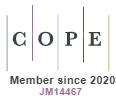Identificação e análise de barreiras para a redução de resíduos de construção e demolição em canteiros de obras comerciais
DOI:
https://doi.org/10.5585/2024.25838Palavras-chave:
redução de resíduos de construção, barreiras, Fuzzy Dematel, revisão sistemática da literatura, canteiros de obras comerciaisResumo
Objetivo: Este estudo identifica e avalia as barreiras para a redução de resíduos de construção e demolição (RCD) em canteiros de obras comerciais de médio porte no Brasil.
Metodologia: Foi realizada uma revisão sistemática da literatura para identificar e classificar as principais barreiras à redução de RCD. Posteriormente, foi aplicada a técnica Fuzzy Dematel para analisar as barreiras com base no conhecimento dos gestores.
Originalidade: Sintetizando os insights de pesquisas existentes sobre os desafios da redução de RCD, o estudo classifica essas barreiras em dimensões técnicas, econômicas e legais no setor da construção civil brasileira. Por meio da análise dessas barreiras sob a ótica dos profissionais, a pesquisa contribui de forma diferenciada ao fornecer um exame novo e focado dentro desse contexto específico.
Resultados: A pesquisa revelou os principais fatores econômicos, ambientais e técnicos. Os resultados destacam a influência da legislação e dos incentivos governamentais noutros obstáculos. A falta de recursos financeiros surgiu como uma barreira significativa à redução dos RCD, de acordo com as opiniões dos gestores.
Contribuições: Este estudo contribui para o avanço da economia circular ao identificar as principais barreiras à redução dos RCD em obras comerciais de média dimensão. Fornece recomendações práticas para ultrapassar estas barreiras, oferecendo conhecimentos valiosos para o desenvolvimento teórico.
Downloads
Referências
Abarca-Guerrero, L., Maas, G., & van Twillert, H. (2017). Barriers and Motivations for Construction Waste Reduction Practices in Costa Rica. Resources, 6(4), 69. https://doi.org/10.3390/resources6040069
Agamuthu, P. (2008). Challenges in sustainable management of construction and demolition waste. Waste Management and Research, 26(6), 491–492. https://doi.org/10.1177/0734242X08100096
Arantes, R. F. M., Zanon, L. G., Calache, L. D. D. R., Bertassini, A. C., & Carpinetti, L. C. R. (2022). A fuzzy multicriteria group decision approach for circular business models prioritization. Production, 32. https://doi.org/10.1590/0103-6513.20220019
Azevedo, G. O. D. D., Kiperstok, A., & Moraes, L. R. S. (2006). Construction waste in Salvador: ways to a sustainable management. Engenharia Sanitaria e Ambiental, 11, 65-72.
Bailey, M., Booth, C. A., Horry, R., Vidalakis, C., Mahamadu, A. M., & Awuah, K. G. B. (2020). Opinions of small and medium UK construction companies on environmental management systems. Proceedings of Institution of Civil Engineers: Management, Procurement and Law, 174(1), 23–34. https://doi.org/10.1680/jmapl.19.00033
Bao, Z., Lee, W. M. W., & Lu, W. (2020). Implementing on-site construction waste recycling in Hong Kong: Barriers and facilitators. Science of the Total Environment, 747, 141091. https://doi.org/10.1016/j.scitotenv.2020.141091
Calache, L. D. D. R., Bertassini, A. C., Osiro, L., & Carpinetti, L. C. R. (2021). Identificação e avaliação de critérios para seleção de projetos sustentáveis aplicando o VFT e o Fuzzy DEMATEL. In Anais do Encontro Nacional de Engenharia de Produção (ENEGEP 2021). https://doi.org/10.14488/enegep2021_tn_wpg_362_1872_42096
Câmara Brasileira da Indústria da Construção – CBIC (2018), Banco de dados do CBIC. http://www.cbicdados.com.br/home
Chien, K. F., Wu, Z. H., & Huang, S. C. (2014). Identifying and assessing critical risk factors for BIM projects: Empirical study. Automation in construction, 45, 1-15.
Condotta, M., & Zatta, E. (2021). Reuse of building elements in the architectural practice and the European regulatory context: Inconsistencies and possible improvements. Journal of Cleaner Production, 318(January 2020), i. https://doi.org/10.1016/j.jclepro.2021.128413
Conforto, E. C., Amaral, D. C., & Silva, S. D. (2011). Roteiro para revisão bibliográfica sistemática: Aplicação no desenvolvimento de produtos e gerenciamento de projetos. Paper presented at the 8º Congresso Brasileiro de Gestão de Desenvolvimento de
Produto (CBGDP 2011), Porto Alegre, RS, Brazil, September 12-14, 2011.
de Souza Campos, L. M., Trierweiller, A. C., Bornia, A. C., de Carvalho, D. N., dos Santos, T. H. S., & Peixe, B. C. S. (2013). Um
Levantamento Exploratório sobre o tema gestão ambiental no setor da construção. Espacios, 34(4), 1–14.
Diotti, A., Plizzari, G., & Sorlini, S. (2021). Technical analysis of full-scale construction and demolition waste treatment plants: case studies of the Lombardy region, Italy. Detritus, 15, 51-66.
Farooque, M., Jain, V., Zhang, A., & Li, Z. (2020). Fuzzy DEMATEL analysis of barriers to Blockchain-based life cycle assessment in China. Computers and Industrial Engineering, 147(July). https://doi.org/10.1016/j.cie.2020.106684
Feldmann, F. G., Birkel, H., & Hartmann, E. (2022). Exploring barriers towards modular construction – A developer perspective using fuzzy DEMATEL. Journal of Cleaner Production, 367(July), 133023. https://doi.org/10.1016/j.jclepro.2022.133023
Gagnon, B., Tanguay, X., Amor, B., & Imbrogno, A. F. (2022). Forest Products and Circular Economy Strategies: A Canadian Perspective. Energies, 15(3), 1–17. https://doi.org/10.3390/en15030673
Giorgi, S., Lavagna, M., Wang, K., Osmani, M., Liu, G., & Campioli, A. (2022). Drivers and barriers towards circular economy in the building sector: Stakeholder interviews and analysis of five european countries policies and practices. Journal of Cleaner
Production, 336 (December 2021), 130395. https://doi.org/10.1016/j.jclepro.2022.130395
Huang, B., Wang, X., Kua, H., Geng, Y., Bleischwitz, R., & Ren, J. (2018). Construction and demolition waste management in China through the 3R principle. Resources, Conservation and Recycling, 129, 36-44. https://doi.org/10.1016/j.resconrec.2017.09.029
Hwang, W., Hsiao, B., Chen, H. G., & Chern, C. C. (2016). Multiphase assessment of project risk interdependencies: evidence from a University ISD project in Taiwan. Project Management Journal, 47(1), 59-75. https://doi.org/10.1002/pmj.21563
Korhonen, J., Honkasalo, A., & Seppälä, J. (2018). Circular Economy: The Concept and its Limitations. Ecological Economics, 143, 37–46. https://doi.org/10.1016/j.ecolecon.2017.06.041
Li, C. W., & Tzeng, G. H. (2009). Identification of a threshold value for the DEMATEL method using the maximum mean de-entropy algorithm to find critical services provided by a semiconductor intellectual property mall. Expert Systems with Applications, 36(6), 9891-9898. https://doi.org/10.1016/j.eswa.2009.01.073
Ling, F. Y. Y., & Nguyen, D. S. A. (2013). Strategies for construction waste management in Ho Chi Minh City, Vietnam. Built Environment Project and Asset Management, 3(1), 141–156. https://doi.org/10.1108/BEPAM-08-2012-0045
Liu, J., Wu, P., Jiang, Y., & Wang, X. (2021). Explore potential barriers of applying circular economy in construction and demolition waste recycling. Journal of Cleaner Production, 326(June), 129400. https://doi.org/10.1016/j.jclepro.2021.129400
Liu, J., Yi, Y., & Wang, X. (2020). Exploring factors influencing construction waste reduction: a structural equation modeling approach. Journal of Cleaner Production, 276, 123185. https://doi.org/10.1016/j.jclepro.2020.123185
Liyanage, K. L. A. K. T., Waidyasekara, K. G. A. S., & Mallawaarachchi, H. (2019). Enablers and barriers to adopt zero waste concept in the construction industry. Malaysian Construction Research Journal, 8(3 Special issue), 41–49.
Low, J. K., Wallis, S. L., Hernandez, G., Cerqueira, I. S., Steinhorn, G., & Berry, T. A. (2020). Encouraging Circular Waste Economies for the New Zealand Construction Industry: Opportunities and Barriers. Frontiers in Sustainable Cities, 2(July), 1–7. https://doi.org/10.3389/frsc.2020.00035
Maekawa, R., De Carvalho, M. M., & De Oliveira, O. J. (2013). Um estudo sobre a certificação ISO 9001 no Brasil: Mapeamento de motivações, benefícios e dificuldades. Gestao e Producao, 20(4), 763–779. https://doi.org/10.1590/S0104-530X2013005000003
Mahpour, A. (2018). Prioritizing barriers to adopt circular economy in construction and demolition waste management. Resources, Conservation and Recycling, 134(November 2017), 216–227. https://doi.org/10.1016/j.resconrec.2018.01.026
Mavi, R. K., & Standing, C. (2018). Critical success factors of sustainable project management in construction: A fuzzy DEMATEL-ANP approach. Journal of Cleaner Production, 194, 751–765. https://doi.org/10.1016/j.jclepro.2018.05.120
Mawed, M., Al Nuaimi, M. S., & Kashawni, G. (2020). Construction And Demolition Waste Management In The Uae: Application And Obstacles. International Journal of GEOMATE, 18(70), 235–245. https://doi.org/10.21660/2020.70.45101
Menegaki, M., & Damigos, D. (2018). A review on current situation and challenges of construction and demolition waste management. Current Opinion in Green and Sustainable Chemistry, 13, 8-15. https://doi.org/10.1016/j.cogsc.2018.02.010
Narcis, N., Ray, I., & Hosein, G. (2019). Construction and demolition waste management actions and potential benefits: A perspective from Trinidad and Tobago. Buildings, 9(6), 1–27. https://doi.org/10.3390/BUILDINGS9060150
Negash, Y. T., Hassan, A. M., Tseng, M. L., Wu, K. J., & Ali, M. H. (2021). Sustainable construction and demolition waste management in Somaliland: Regulatory barriers lead to technical and environmental barriers. Journal of Cleaner Production, 297. https://doi.org/10.1016/j.jclepro.2021.126717
Olanrewaju, S. D., & Ogunmakinde, O. E. (2020). Waste minimisation strategies at the design phase: Architects’ response. Waste Management, 118, 323–330. https://doi.org/10.1016/j.wasman.2020.08.045
Osiro, L., Lima-Junior, F. R., & Carpinetti, L. C. R. (2014). A fuzzy logic approach to supplier evaluation for development. International Journal of Production Economics, 153, 95-112. https://doi.org/10.1016/j.ijpe.2014.02.009
Owolana, V. O., & Booth, C. A. (2016). Stakeholder perceptions of the benefits and barriers of implementing environmental management systems in the Nigerian construction industry. Journal of Environmental Engineering and Landscape
Management, 24(2), 79–89. https://doi.org/10.3846/16486897.2015.1127251
Pellegrini, L., Campi, S., Locatelli, M., Pattini, G., Di Giuda, G. M., & Tagliabue, L. C. (2020). Digital Transition and Waste Management in Architecture, Engineering, Construction, and Operations Industry. Frontiers in Energy Research, 8(November), 1–21. https://doi.org/10.3389/fenrg.2020.576462
Peng, Chun-Li; Scorpio, D. E.; Kibert, C. J. Strategies for successful construction and demolition waste recycling operations. Construction Management and Economics. V. 15, n 1, 49-58, 1997. https://doi.org/10.1080/014461997373105
Ratnasabapathy, S., Alashwal, A., & Perera, S. (2021). Exploring the barriers for implementing waste trading practices in the construction industry in Australia. Built Environment Project and Asset Management, 11(4), 559–576. https://doi.org/10.1108/BEPAM-04-2020-0077
Rodrigues, L. R., Calache, L. D. D. R., Osiro, L., & Ganga, G. M. D. (2023). A proposal of selection and analysis of criteria for sustainable supplier selection based on fuzzy DEMATEL. International Journal of Logistics Systems and Management, 45(4), 415-446. https://doi.org/10.1504/IJLSM.2021.10040224
Röhm, D. G., Neto, J. D. C. M., & Röhm, S. A. (2013). Gestão dos Resíduos da Construção Civil (RCC) em Canteiros de Obras de Empresas Construtoras da Cidade de São Carlos-SP, Brasil. Engenharia Civil, (45), 21-36.
Roth, G., & Garcias, C. M. (2009). Construção Civil e a Degradação Ambiental. Desenvolvimento Em Questão, 7(13), 111–128. https://doi.org/10.21527/2237-6453.2009.13.111-128
Shooshtarian, S., Maqsood, T., Caldera, S., & Ryley, T. (2022). Transformation towards a circular economy in the Australian construction and demolition waste management system. Sustainable Production and Consumption, 30, 89-106. https://doi.org/10.1016/j.spc.2021.11.032.
Souza, U. E. L. D., Agopyan, V., Paliari, J. C., & Andrade, A. C. D. (1999). Anais do Simpósio Nacional Desperdício de Materiais nos Canteiros de Obras: a quebra do mito.
Spišáková, M., Mésároš, P., & Mandičák, T. (2021). Construction waste audit in the framework of sustainable waste management in construction projects—case study. Buildings, 11(2), 1–16. https://doi.org/10.3390/buildings11020061
Tsai, W. H., & Chou, W. C. (2009). Selecting management systems for sustainable development in SMEs: A novel hybrid model based on DEMATEL, ANP, and ZOGP. Expert Systems with Applications, 36(2 PART 1), 1444–1458. https://doi.org/10.1016/j.eswa.2007.11.058
Udawatta, N., Zuo, J., Chiveralls, K., Yuan, H., Zillante, G., & Elmualim, A. (2018). Major factors impeding the implementation of waste management in Australian construction projects. Journal of Green Building, 13(3), 101–121. https://doi.org/10.3992/1943-4618.13.3.101
Vidyasekar, & Selvan. (2019). Identification of the factors, barriers, and motivations that influence the construction and demolishing waste generation and management. International Journal of Recent Technology and Engineering, 8(2 Special Issue 11), 2619–2623. https://doi.org/10.35940/ijrte.B1317.0982S1119
Yu, A. T. W., Wong, I., & Mok, K. S. H. (2021). Effectiveness and barriers of Pre-refurbishment Auditing for refurbishment and renovation waste management. Environmental Challenges, 5, 100231. https://doi.org/10.1016/j.envc.2021.100231
Zhang, A., Venkatesh, V. G., Liu, Y., Wan, M., Qu, T., & Huisingh, D. (2019). Barriers to smart waste management for a circular economy in China. Journal of Cleaner Production, 240, 118198. https://doi.org/10.1016/j.jclepro.2019.118198
Downloads
Publicado
Como Citar
Edição
Seção
Licença
Copyright (c) 2024 Pedrita Fernanda Silva, Lucas Daniel Del Rosso Calache, Rafael Ferro Munhoz Arantes, Lauro Osiro

Este trabalho está licenciado sob uma licença Creative Commons Attribution-NonCommercial-ShareAlike 4.0 International License.









